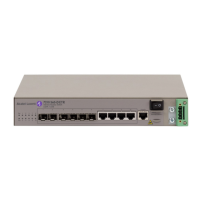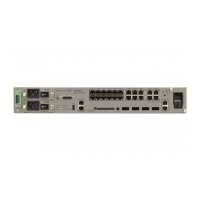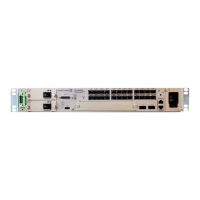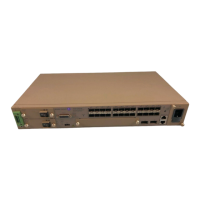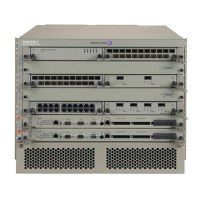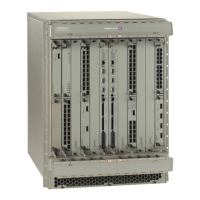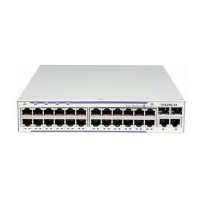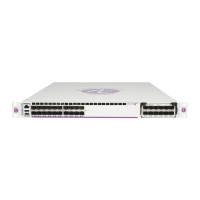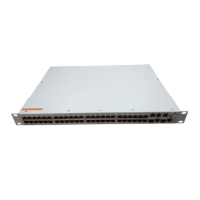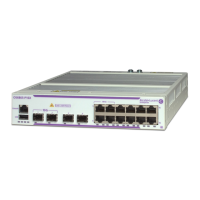QoS Overview
Page 42 7210 SAS D, E, K OS Quality of Service Guide
mission rate of the queue. If the current rate is at or below the CIR threshold, the queue is
considered in-profile. If the current rate is above the threshold, the queue is considered out-
of-profile. The in-profile and out-profile state of queue is linked to scheduler prioritizing
behavior as discussed below.
2. Scheduler queue priority metric — The scheduler serving a group of queues prioritizes
individual queues based on their current CIR and PIR states. Queues operating below their
CIR are always served before those queues operating at or above their CIR.
Queues at the egress never mark the packets as in-profile or out-profile based on the queue CIR,
PIR values. The in-profile and out-profile state of the queue interacts with the scheduler
mechanism and provides the minimum and maximum bandwidth guarantees.
When defining the CIR for a queue, the value specified is the administrative CIR for the queue.
User has some control over how the administrative CIR is converted to an operational CIR should
the hardware not support the exact CIR and PIR combination specified. The interpretation of the
administrative CIR is discussed below in Adaptation Rule for Queues on page 47. Although the
7210 SAS is flexible in how the CIR can be configured, there are conventional ranges for the CIR
based on the forwarding class of a queue. An egress queue associated with the high-priority class
normally has the CIR threshold equal to the PIR rate although the 7210 SAS allows the CIR to be
provisioned to any rate below the PIR should this behavior be required.
The CIR for a service queue is provisioned on ingress and egress service queues within service
ingress QoS policies and service egress QoS policies, respectively.
The CIR for access port queues are defined within the access-egress policies. The CIR for access-
uplink port queues are defined within network queue policies based on the forwarding class. The
CIR for the queues of the forwarding class is defined as a percentage of the network interface
bandwidth.
Peak Information Rate
The peak information rate (PIR) defines the maximum rate at which packets are allowed to exit the
queue. It does not specify the maximum rate at which packets may enter the queue; this is
governed by the queue's ability to absorb bursts. The actual transmission rate of an egress queue
depends on more than just its PIR. Each queue is competing for transmission bandwidth with other
queues. Each queue's PIR, CIR and the relative priority and/or weight of the scheduler serving the
queue, all combine to affect a queue's ability to transmit packets.
The PIR for a service queue is provisioned on ingress and egress service queues within service
ingress QoS policies and service egress QoS policies, respectively.
The PIR for access port queues are defined within the access-egress policies. The PIR for access-
uplink port queues are defined within network queue policies based on the forwarding class. The

